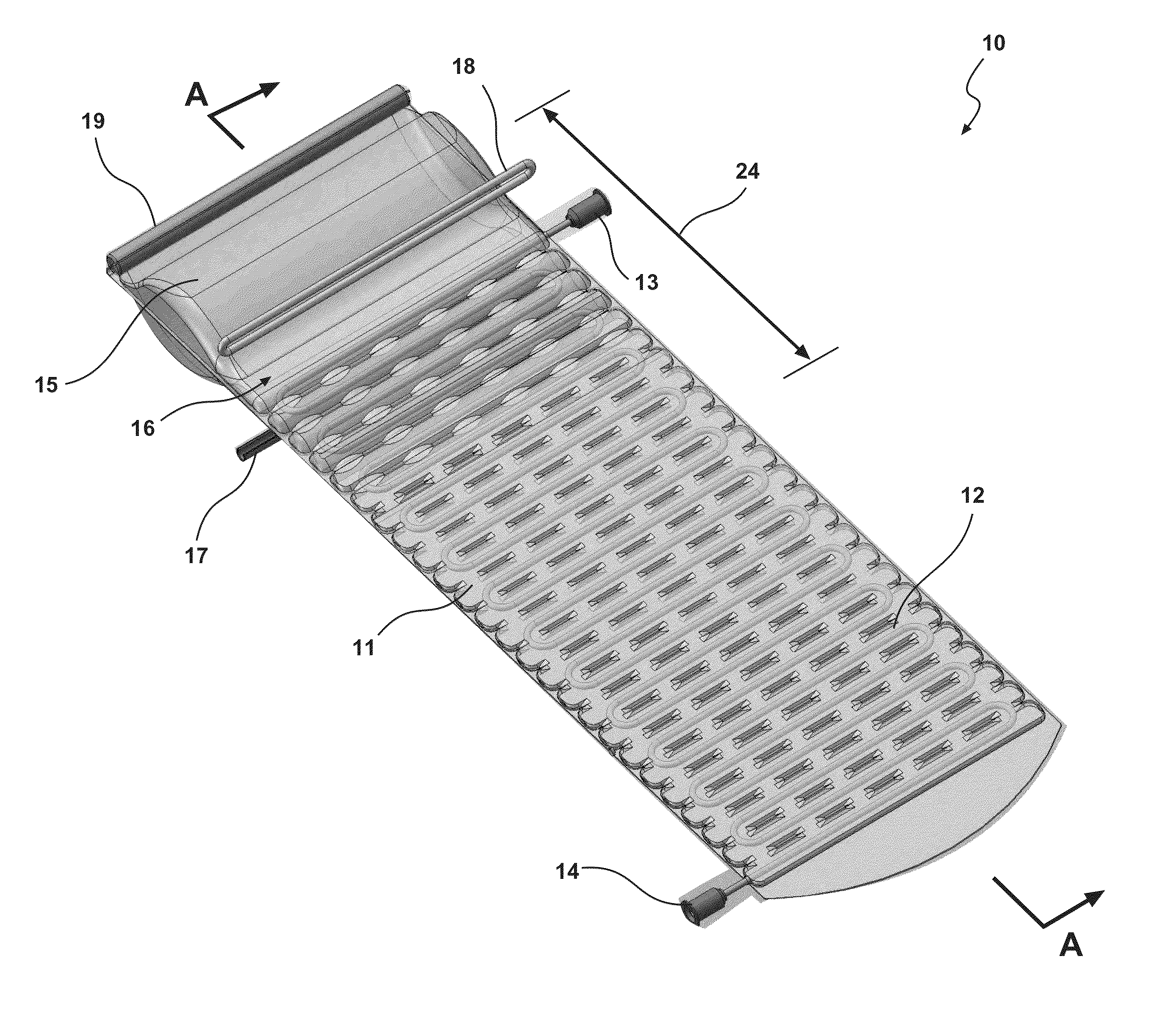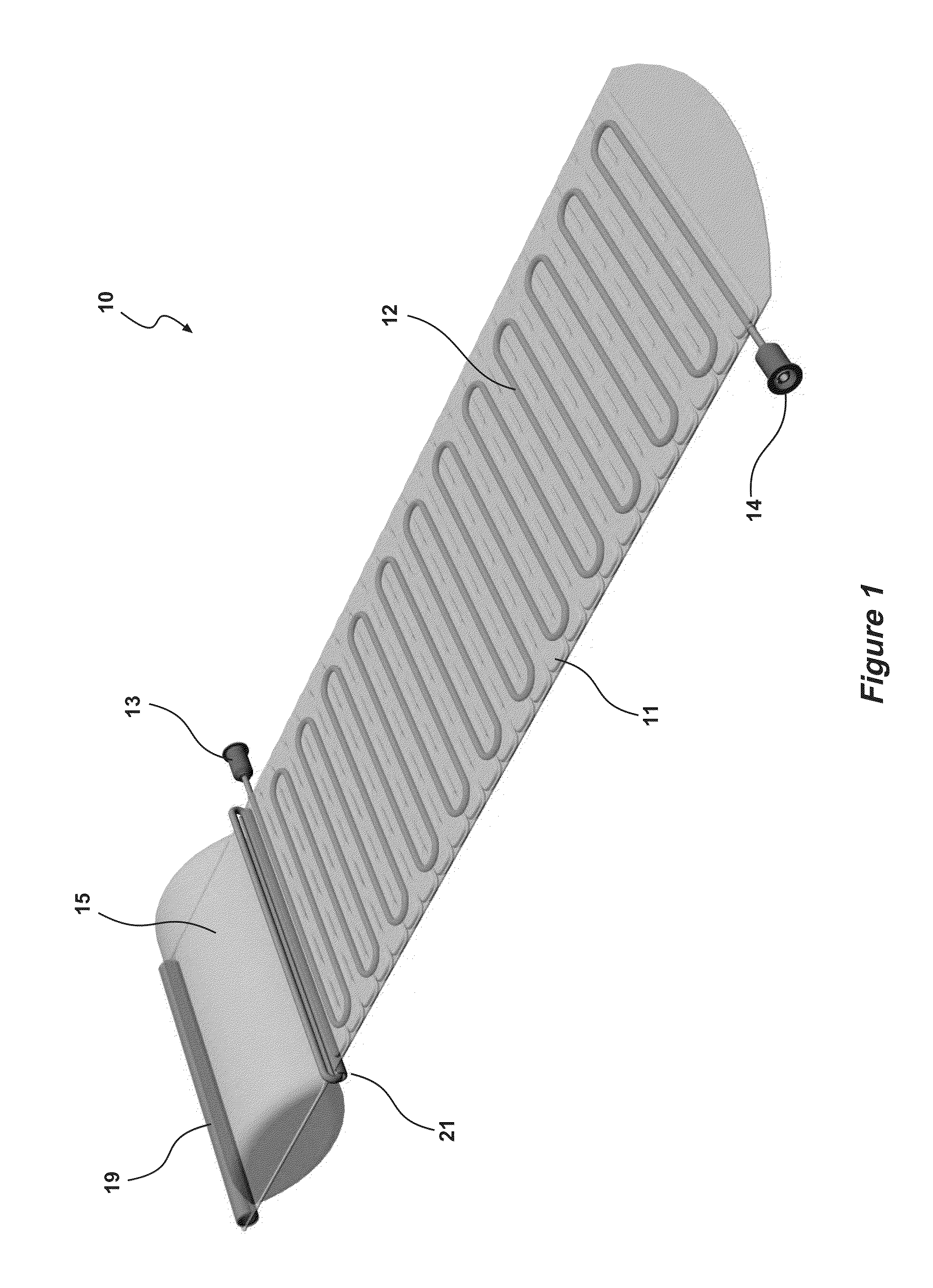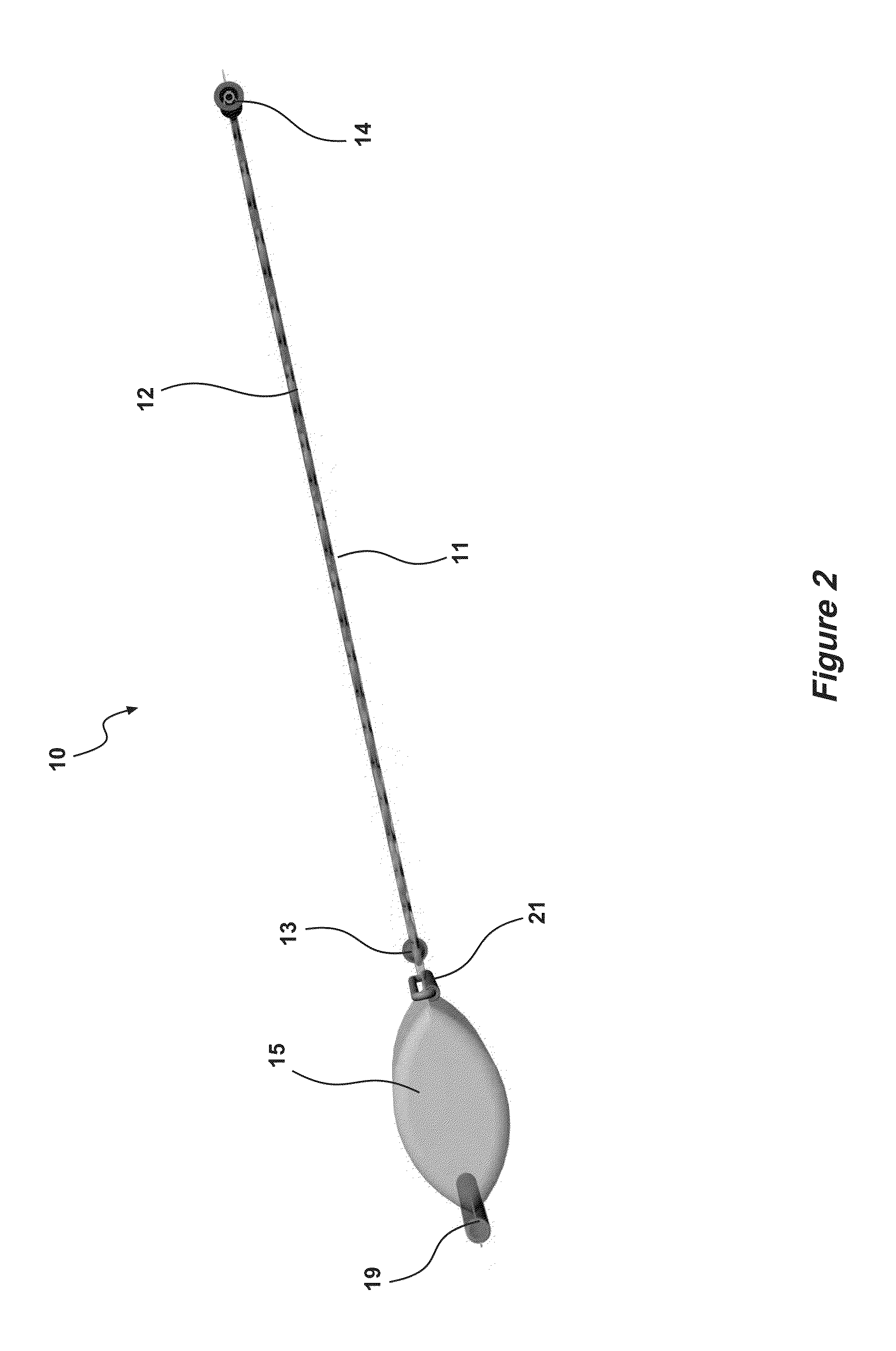Portable fluid warmer
a fluid heating device and portable technology, applied in the direction of exothermal chemical reaction heat production, contraceptive devices, light and heating apparatus, etc., can solve the problems of patient core temperature dropping to dangerous levels, large and cumbersome devices, and not convenient to use, so as to slow or prevent the complete chemical reaction from occurring, the effect of enhancing the rapid flow of crystallising liquid chemical and enhancing the speed of the crystallising liquid chemical
- Summary
- Abstract
- Description
- Claims
- Application Information
AI Technical Summary
Benefits of technology
Problems solved by technology
Method used
Image
Examples
Embodiment Construction
[0054]Turning to the figures for a detailed explanation of the invention, there is illustrated a fluid heating device demonstrating by way of examples arrangements in which the principles of the present invention may be employed. FIG. 1 illustrates an embodiment of the device (10) of the present invention including a reaction chamber (11) for containing the exothermic reaction. This reaction chamber further contains the tubing (12) in a planar serpentine arrangement through which the infusion or transfusion fluid to be warmed can pass between inlet (14) and outlet (13). As illustrated in FIG. 2 the reaction chamber (11) has a generally envelope shaped configuration.
[0055]The reaction chamber (11) is connected to a secondary chamber (15) that contains a reactive liquid compound needed for the exothermic reaction. Prior to use the reactive liquid in the secondary chamber (15) cannot enter the reaction chamber because the two chambers are separated by way of a clamp (21), comprising a ...
PUM
 Login to View More
Login to View More Abstract
Description
Claims
Application Information
 Login to View More
Login to View More - R&D
- Intellectual Property
- Life Sciences
- Materials
- Tech Scout
- Unparalleled Data Quality
- Higher Quality Content
- 60% Fewer Hallucinations
Browse by: Latest US Patents, China's latest patents, Technical Efficacy Thesaurus, Application Domain, Technology Topic, Popular Technical Reports.
© 2025 PatSnap. All rights reserved.Legal|Privacy policy|Modern Slavery Act Transparency Statement|Sitemap|About US| Contact US: help@patsnap.com



